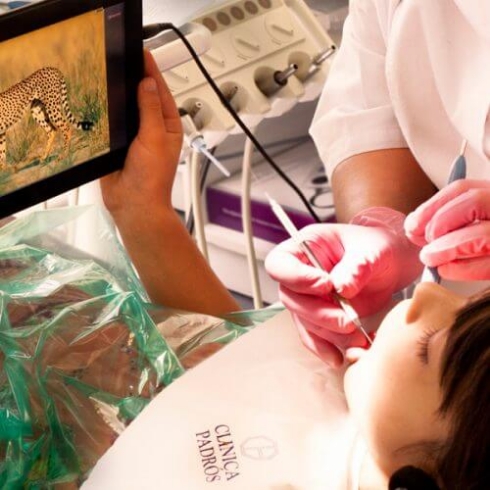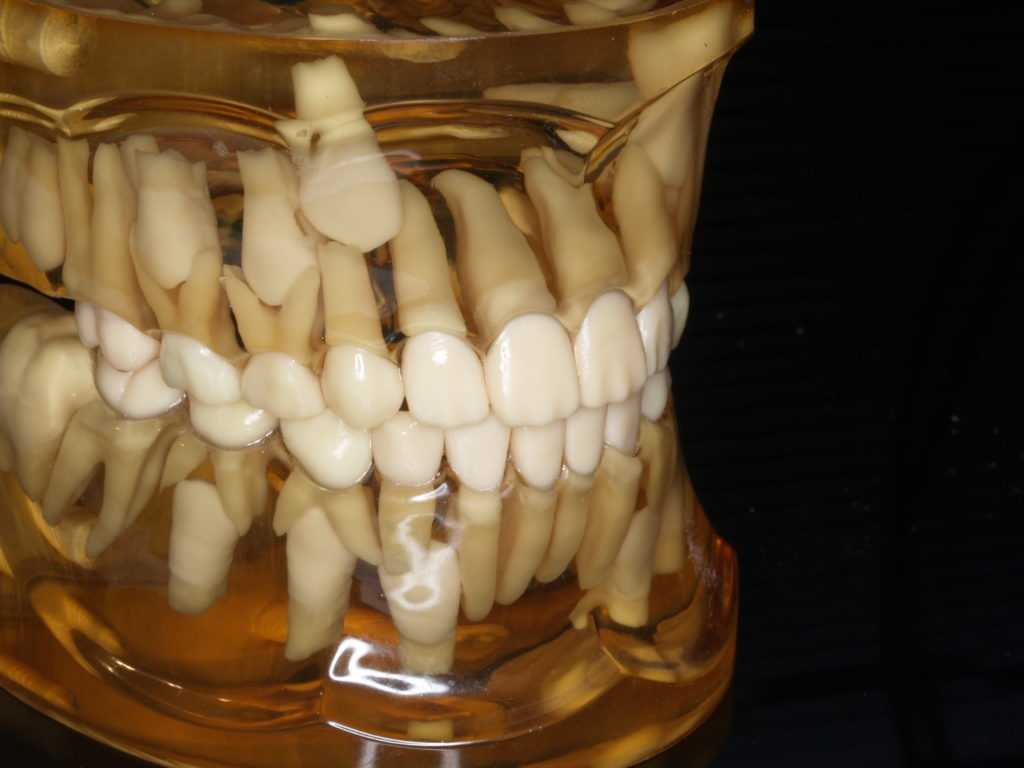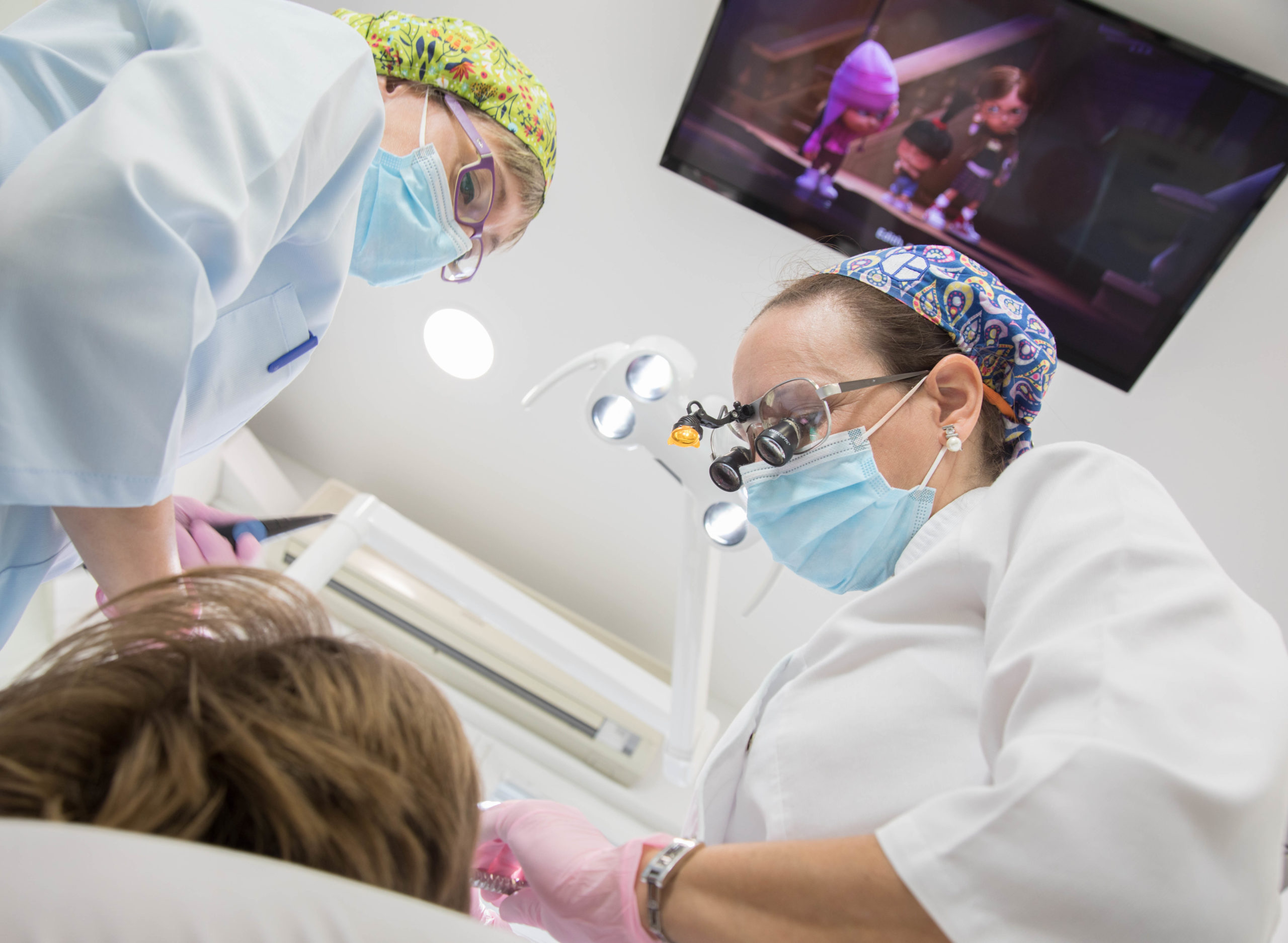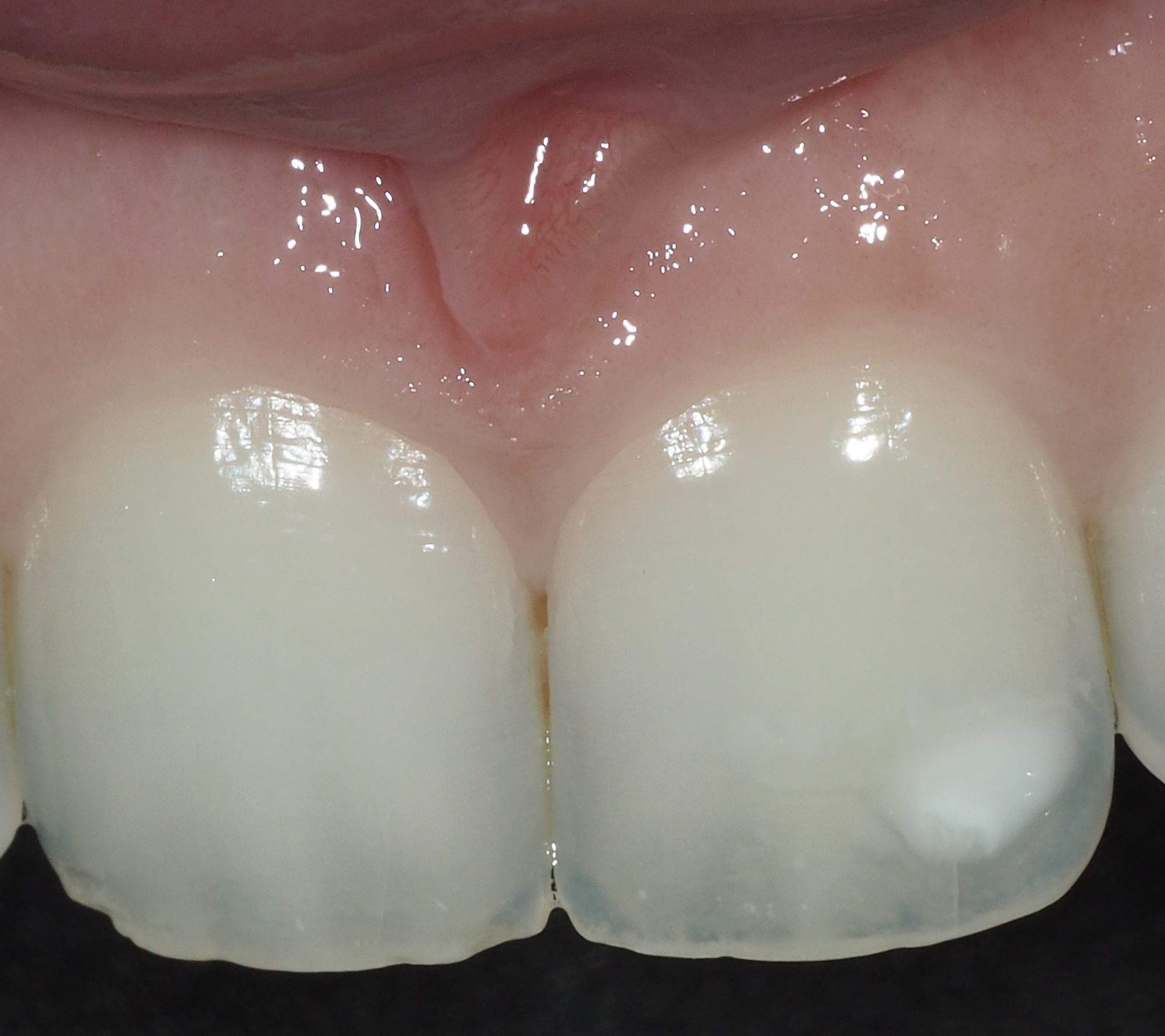Pediatric dentistry

The importance of children going to the dentist
Pediatric dentistry is the part of dentistry performed by pedodontists. They start to treat the youngest when they still have deciduous teeth, until their teeth are definitive.
A very frequent question that parents always ask themselves is: which is the appropriate age for the first visit of children to the dentist?
Even though deciduous teeth should be brushed since they erupt, it is recommended that the first visit to the dentist takes place at 4 years of age.
To brush babies’ deciduous teeth, parents can use a humid sterile gauze. They should sit the infant on their knees. Besides, there are specific brushes for these young ages. It is ideal to transmit the brushing habit by imitation. During the first infancy, it could be stablished as a game-routine the fact of parents and children brushing together.
Regarding the first visit to the dentist, the main objective is to stablish a first contact that will allow the dentist to diagnose any problem but, above all, to transfer the child trustfulness and tranquillity, with the professional that will take care of his or her mouth throughout the years.
It is very important that the child is happy when going to the dentist, and that the professional is able to transmit the importance of mouth and teeth care since the first years of his or her life. Prevention is the best way to do that, since obviously the best treatment is just supervision and periodic control.
In the first always oral hygiene habits will be taught, and health habits will be indicated in an individualized way.
First, the importance of following an adequate diet will be stressed. This diet should be non-cariogenic, avoiding sugars and refined flours (cookies, cakes, sweets, etc.). Those foods are the nutrients for bacteria, which in turn will produce acids which will demineralize the surface of the tooth, and finally generate carious lesions. A diet with too much sugar is associated with important carious problems.
It is advisable, so, to follow a varied and healthy diet which includes vegetables, meat, fish and especially calcium-rich foods.
Children can also develop gingival problems if they do not brush properly. It is important to teach the child the correct movements with the toothbrush and be able to detect their ability to indicate a specific brushing technique.
In Clínica Dental Padrós-Creus Muntaner we believe that only this way, communicating to the youngest patients the importance of taking care of their mouth, we will be able to have, in the future, adults with healthy mouths.

The most important preventive treatment in pediatric dentistry is the opening, cleaning and hermetic sealing of the molar’s fissures. This treatment is highly effective to prevent carious lesions.
The fissures of the occlusal part of the molars are a place where toothbrushes cannot reach the bottom of the structures. For this reason, in those places many microorganisms can accumulate, and they can cause up to 90% of the caries in children from 6 to 14 years of age. They are frequently carious lesions that progress rapidly, and they don’t cause pain until they are considerably big. We should remember that tooth tissues do not have the capacity to regenerate, and for this reason every micron of dental structure that is altered will be lost forever.
The sealing of these fissures before the caries appears lets us maintain the health and integrity of the teeth for many years. With this treatment we are able to avoid the advancement of caries, and avoiding a more interventionist treatment with a dental filling, or if the tooth nerve is already affected, requiring a pulpotomy, a pulpectomy or an extraction and the necessary placement of a space maintainer.
In Clínica Dental Padrós-Creus Muntaner we will exhaustively study each case, and considering the particular incidence of caries in every patient, his or her oral hygiene level and his or her dental anatomy, we will decide if the molars of the patient will require to be sealed to prevent the development of possible carious lesions.


1. HIM SYNDROME (Hypomineralization of incisors and molars)
Recently it has been detected a very frequent phenomenon: the apparition of stains in children, which have a white opaque, yellow or even brown colour in incisors and first definitive molars. Curiously, these are the teeth which are formed during the intrauterine life.
Despite the many investigations in this respect, the cause is not known. These stains indicate a defect in the enamel of affected teeth, and this make them very sensible and, depending on the degree of affectation, they may be more or less fragile.
It is very frequent to see just erupted molars with deep cavitations (holes), which can be dental problems forever. The precocious diagnosis is paramount to decide adequately in every case. The treatment of HIM can vary since a constant control and the re-mineralization with specific materials like Recaldent, or also the filling of the cavities with biomaterials or resins.


2. TRAUMATIC INJURIES IN CHILDREN
The constant movement of children cause that they receive quite frequently trauma on their teeth. Those traumatic injuries may be very evident and cause that parents worry a lot.
In front of dental traumas, the most important advice is to remain calmed, wash the wound and try to find out what has happened with the involved teeth. Whenever possible it is advisable to find the fractured part of the teeth, or even the avulsed whole tooth. They should be conserved in milk or saliva. It is important to act rapidly and come to the office as soon as possible.


